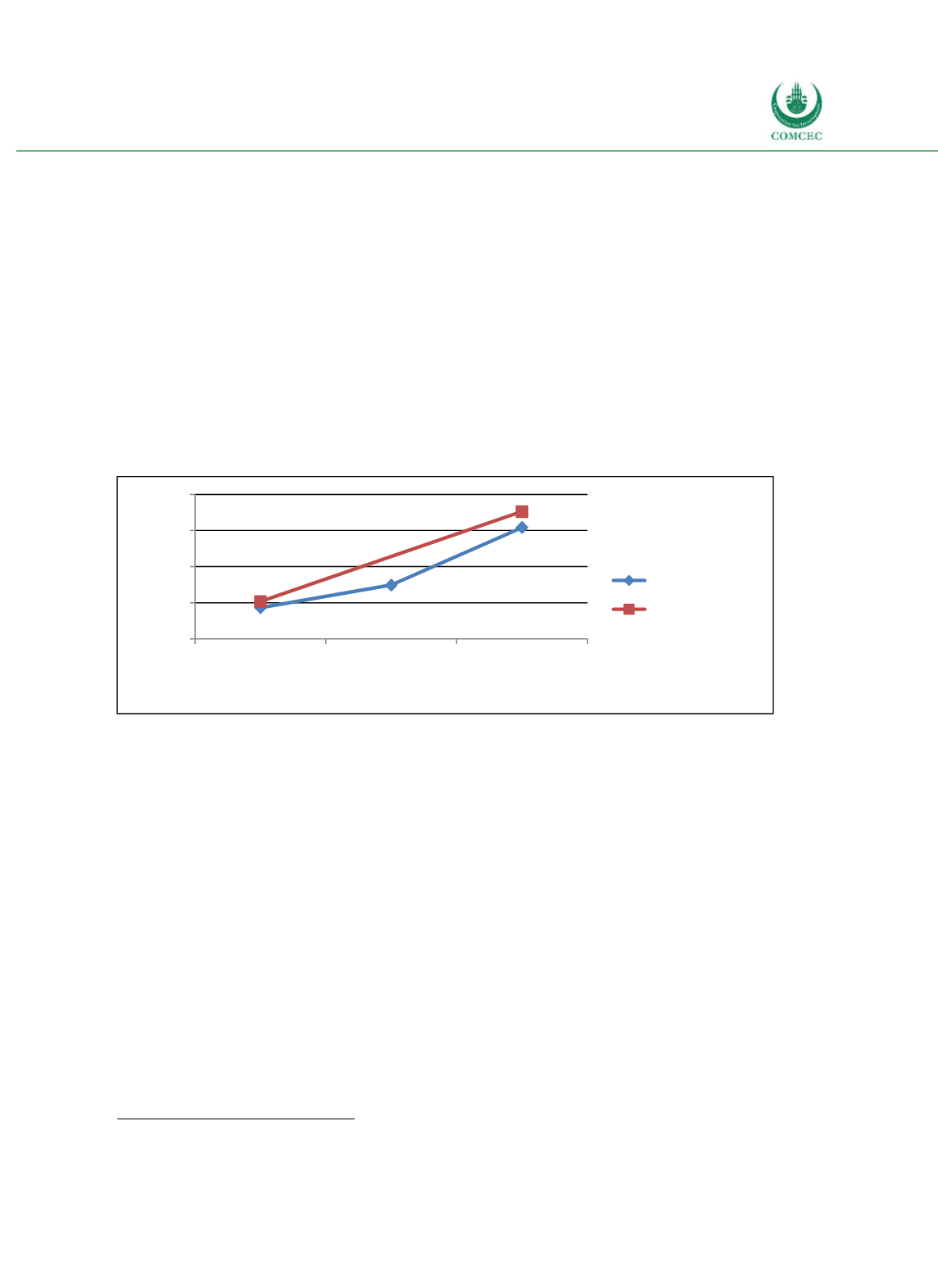

Improving Public Debt Management
In the OIC Member Countries
75
41). The external debt portfolio has higher ATM due to financing mostly from multilateral and
bilateral creditors. The refinancing risk of the external debt portfolio is therefore lower than
that of the domestic debt portfolio. The domestic debt portfolio with mostly one year
maturities poses a high rollover risk (MoFEA 2014). The interest rate exposure, which is
indicated by the average time for refixing (ATR), is 2.6 years for the domestic debt and 10.7
years for the external debt portfolio (MoFEA 2014). In the domestic debt market variable
interest rates hardly exist.
While the implied interest rate on external debt is quite low at around 1.7% (MoFEA 2014),
domestic interest rates remain high in Gambia, which is the result of a constant crowding out
of credit by the public sector (IMF 2015). Legal and institutional difficulties contribute to the
elevated domestic interest rates. Currently, the yields of TBills are equal to 15.73% (91day),
16.98% (182day) and 20.17% (364day). The rates of return on TBills and SAS bills follow
the form of classical yield curves (see Figure 42).
Figure 4-2: Gambia - Yield Curves of T-Bills and Sukuk (2016)
Sources: Central Bank of the Gambia (2016), calculations by the Ifo Institute.
C) Policy Recommendations
Public debt management in Gambia needs to be improved although “efforts are underway”
(IMF 2015, p. 9). The government has installed a public debt management office but still
several institutions and committees are involved in debt management. The MTDS does not
include numerical strategic targets and benchmarks regarding the risks the government’s debt
portfolio is facing.
15
Domestic debt is confronted with high interest rate risk and refinancing risk because of short
maturities. The government is advised to use more longterm debt instruments to lengthen the
average time of maturity of domestic debt. The strong reliance of the government on
borrowing from the banking sector gives rise to a crowdingout of private credit. The
government is advised to take measures to develop the domestic debt market and diversify the
creditor structure. It is recommended to strengthen market oriented practices and reduce debt
at the central bank that currently holds about 37% of domestic debt.
External debt is influenced by the depreciation of dalasi. Monetary policy is likely to reduce the
effect of depreciation on the national currency. The CBG needs to use the monetary policy tools
15
Numerical targets are, however, included in the Annual Public Debt Bulletin.
14 16 18 20 22
91days
182days
364days
Yield (in %)
Maturity
TBills Sukukalsalam
















